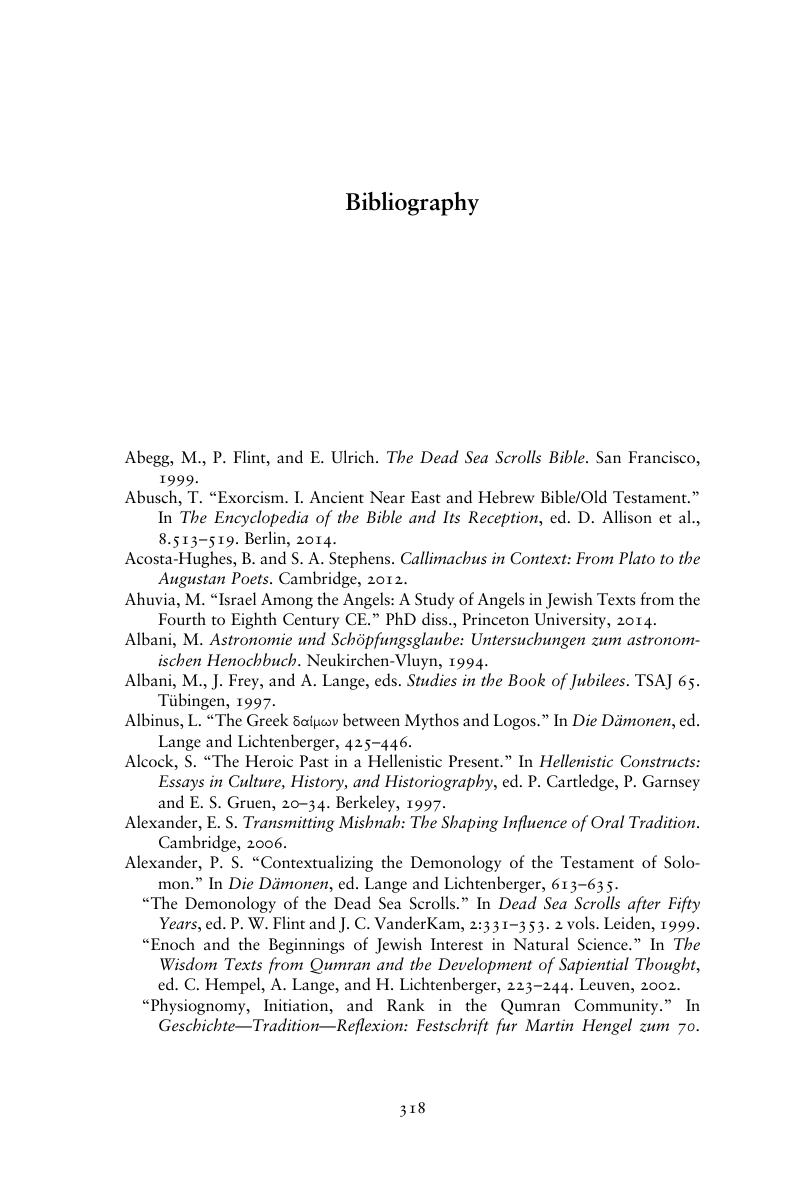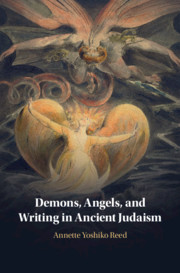Book contents
- Demons, Angels, and Writing in Ancient Judaism
- Demons, Angels, and Writing in Ancient Judaism
- Copyright page
- Dedication
- Contents
- Preface and Acknowledgments
- Introduction
- 1 Multiplicity, Monotheism, and Memory in Ancient Israel
- 2 Rethinking Scribalism and Change in Second Temple Judaism
- 3 Writing Angels, Astronomy, and Aramaic in the Early Hellenistic Age
- 4 Textualizing Demonology as Jewish Knowledge and Scribal Expertise
- 5 Rewriting Angels, Demons, and the Ancestral Archive of Jewish Knowledge
- Conclusion
- Bibliography
- Index
- References
Bibliography
Published online by Cambridge University Press: 16 January 2020
- Demons, Angels, and Writing in Ancient Judaism
- Demons, Angels, and Writing in Ancient Judaism
- Copyright page
- Dedication
- Contents
- Preface and Acknowledgments
- Introduction
- 1 Multiplicity, Monotheism, and Memory in Ancient Israel
- 2 Rethinking Scribalism and Change in Second Temple Judaism
- 3 Writing Angels, Astronomy, and Aramaic in the Early Hellenistic Age
- 4 Textualizing Demonology as Jewish Knowledge and Scribal Expertise
- 5 Rewriting Angels, Demons, and the Ancestral Archive of Jewish Knowledge
- Conclusion
- Bibliography
- Index
- References
Summary

- Type
- Chapter
- Information
- Demons, Angels, and Writing in Ancient Judaism , pp. 318 - 343Publisher: Cambridge University PressPrint publication year: 2020

